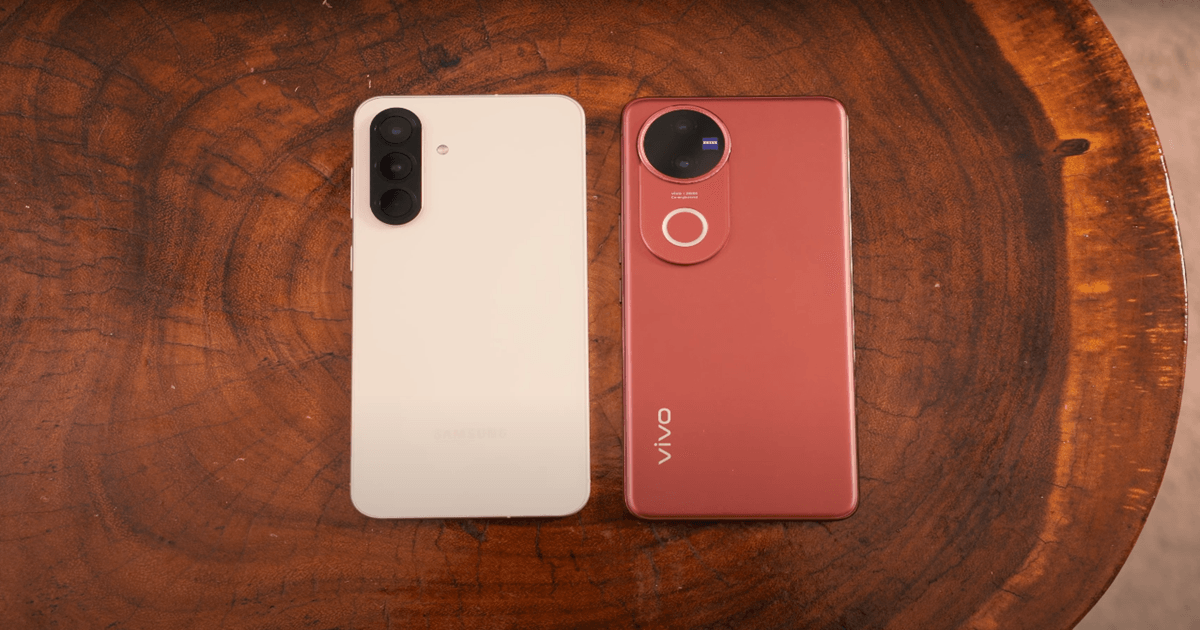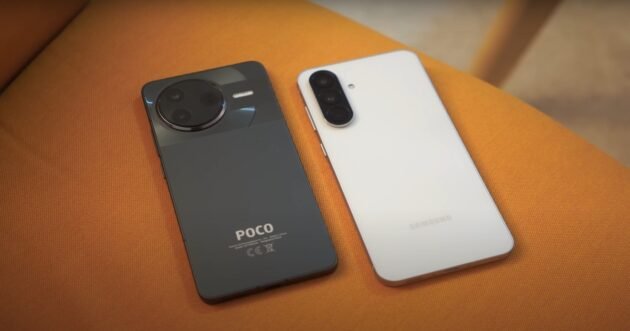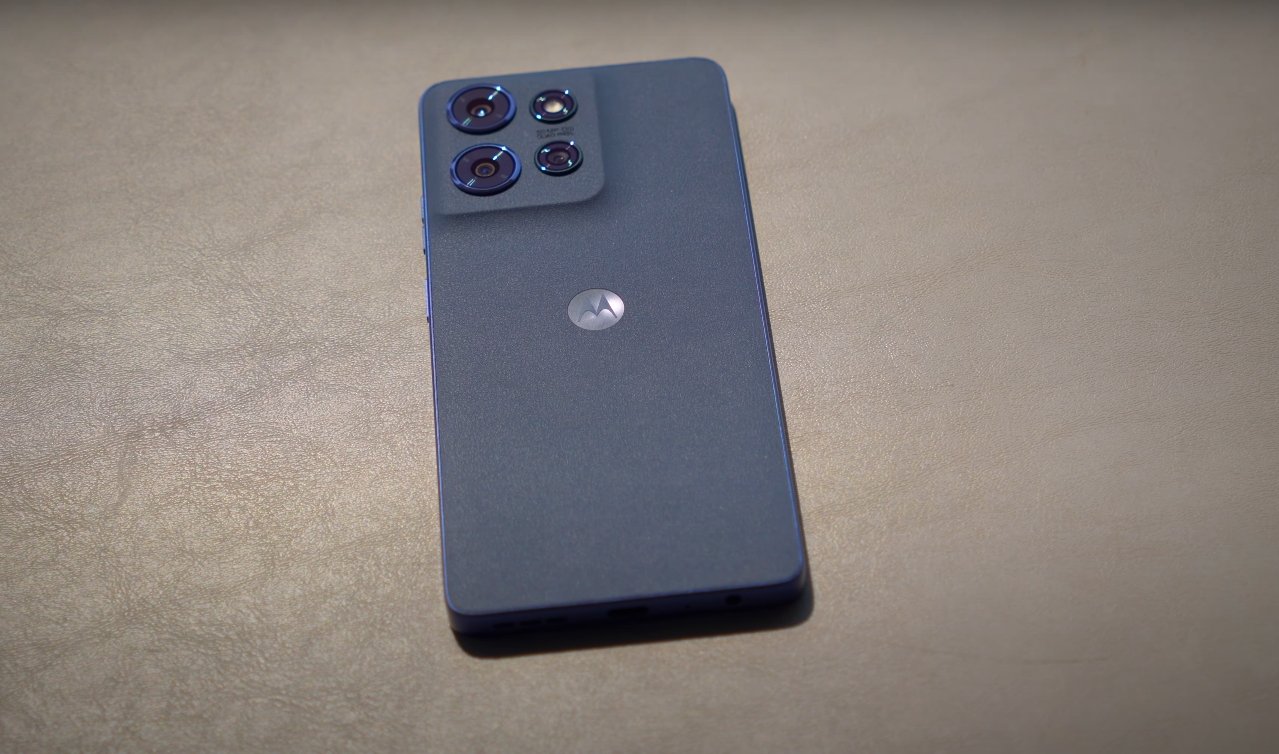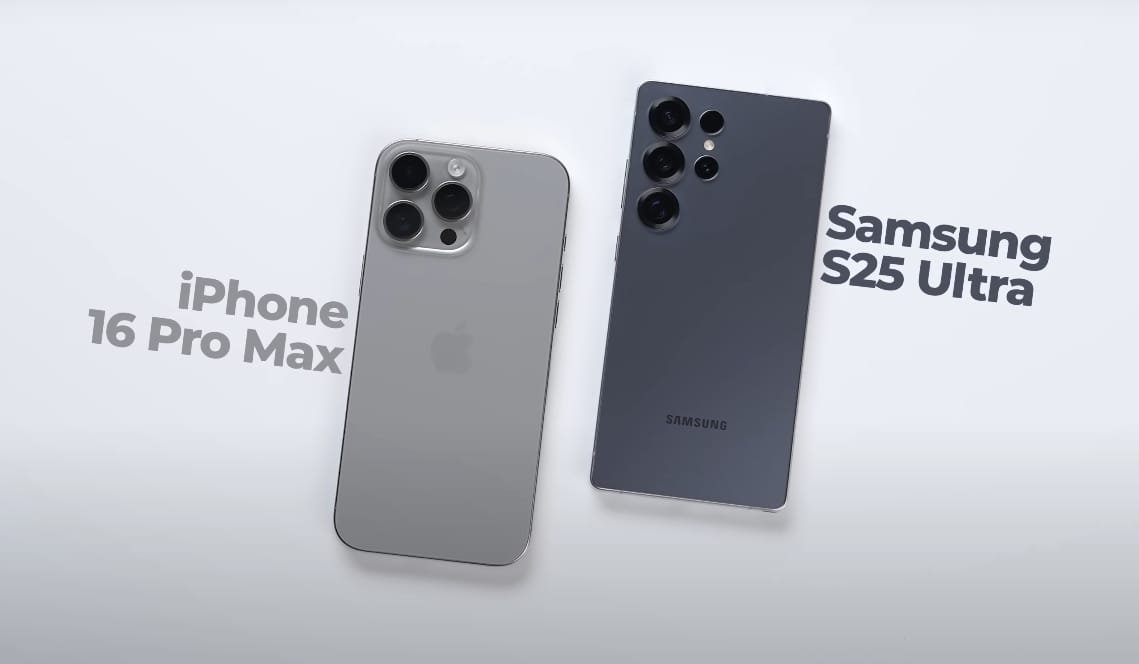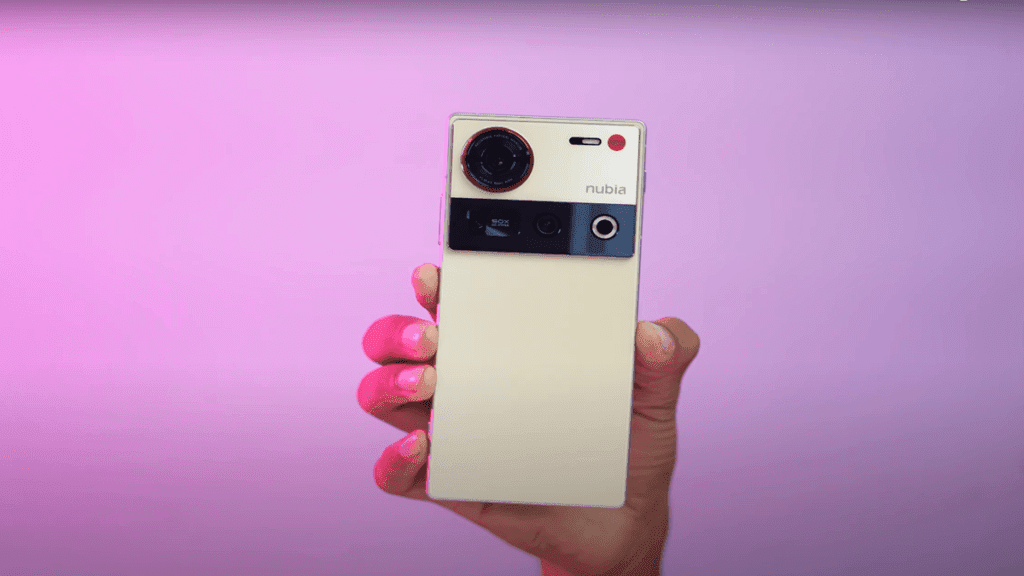We recently reviewed both the Samsung Galaxy A56 5G and the Vivo V50 5G. Two mid-range phones. They each bring their own strengths to the table, whether it’s Samsung’s trusted 1 UI experience or Vivo’s Zeiss Tuned cameras.
Build quality of both smartphones
Starting with design, right off the bat, the Samsung Galaxy A565G sticks to a more traditional build with flat sides, sharp edges, and the modern minimalist Samsung aesthetic, featuring the triple camera layout and a flat back. Battery life is another crucial factor where the Vivo V50 shines with a 6,000 mAh battery and superior charging speed, while the A56 has a 5,000 mAh battery.
What’s nice about the A56 is it sports an aluminum frame and Gorilla Glass Victas Plus for both the front and back glass, giving it a sturdy feel in hand with some certified drop and scratch resistance. And yes, it still comes with IP67 water and dust resistance. Meanwhile, the Vivo V55G goes for an arguably sleeker, curvier approach. It features a satin-like finish with curved edges and a curved display in front. It’s lighter and in our opinion, more comfortable to hold. Unlike the A56.
Importance features on to make there are profesional smartphones
The V50 gets a higher IP69 water and dust resistance rating. IP67 offers protection against dust and water submersion of up to one meter for 30 minutes. IP69 on the other hand is designed to withstand high pressure and high temperature water jets. And on top of all that, Vivo also features a diamond anti-drop film and a 10 facet internal cushioning structure for added durability. So, for this round, yes, design is subjective to each person’s taste. But for this matchup, if we’re after a tougher, flashier, and more ergonomic design, the Vivo V55G edges ahead here.
Display types of both phones
For display, the Galaxy A565G has a 6.7 in Super AMOLED panel with a full HD plus resolution, up to a 120 Hz refresh rate, and peaks at 1200 nits of brightness. It’s pretty color accurate, too, especially when set to the natural display profile. The Vivo V55G, on the other hand, sports a 6.77 in curved AMOLED display, also with a full HD plus resolution and a 120 Hz adaptive refresh rate. The display on the A56 is a 6.7-inch Super AMOLED with a full HD+ resolution, compared to the V50’s 6.7-inch curved AMOLED display. Both displays offer users inky, deep blacks with a vibrant punch if warranted.
The V50’s display can feel a bit more immersive when in actual use, thanks to its curved screen. We can even make a case that it actually feels a bit more premium while watching videos or playing games, especially when compared to the A56’s thicker display bezels, which have shrunken compared to its predecessor, but still thicker than the competition. Both displays are excellent, which means this round should result in a tie. The Vivo V50 has a higher IP69 water and dust rating compared to the A56’s IP67.
In our opinion who is best
The A56’s thicker bezels can sway a lot of users to the V50 side. And with that said, we’re giving this round to the Vivo V50 5G, giving it its second point. For hardware, the Galaxy A56 sports a Samsung Exynos 1580 chipset paired with 8 GB of RAM and either 128 gigs or 256 GB of UFS 3.1 internal storage. It’s good enough for casual use, multitasking, and a bit of gaming. Though, don’t expect it to go toe-to-toe with higherend chips.
On the other hand, the Vivo V55G is powered by a Qualcomm Snapdragon 7 Gen 3 configured with 8 or 12 GB of RAM and 256 GB or 512 GB of UFS 2.2 storage. And for those wondering, neither handsets feature expandable storage via micro SD card. Performance can often be subjective; while benchmarks provide quantitative data, users may not notice significant real-world differences in day-to-day operations.
Peformance wise both compare
When it came to benchmarks, some of you may have already assumed storage speeds to be on the A56’s side. If so, you guys are right. It’s just the typical difference between the different UFS classes. In terms of performance, the A56 is powered by the Exynos 1380 with 8 GB of RAM, while the V50 uses the Snapdragon 7 Gen 3 chipset, which edges out in GPU performance.
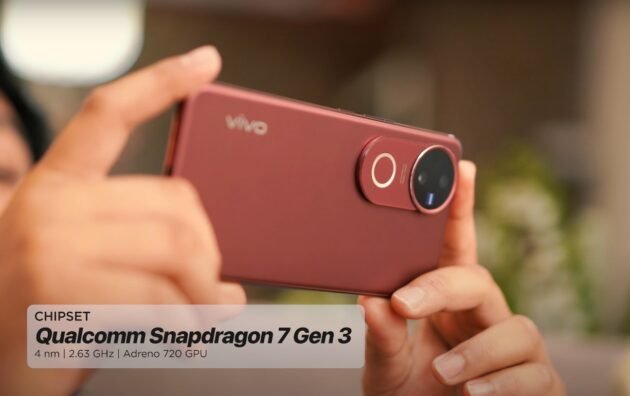
When it comes to general performance, the Exynos powered A56 beats the Snapdragon Riding V50 seen in both Anutu and PC Mark benchmark results. When it came to more GPU intensive benchmarks, the V50 takes the cake, albeit not by much, but still does anyway. In everyday use, the A56 can seem a lot snappier when navigating through the interface coming from a sleep state.
Camera capabilities
The competition in camera technology has reached a point where personal preferences in image processing like color tones, sharpness may outweigh the technical specifications of the sensors, prompting manufacturers to focus on user-centric camera capabilities.
Read Also: Samsung S24 FE vs Motorola Edge 60 Pro
